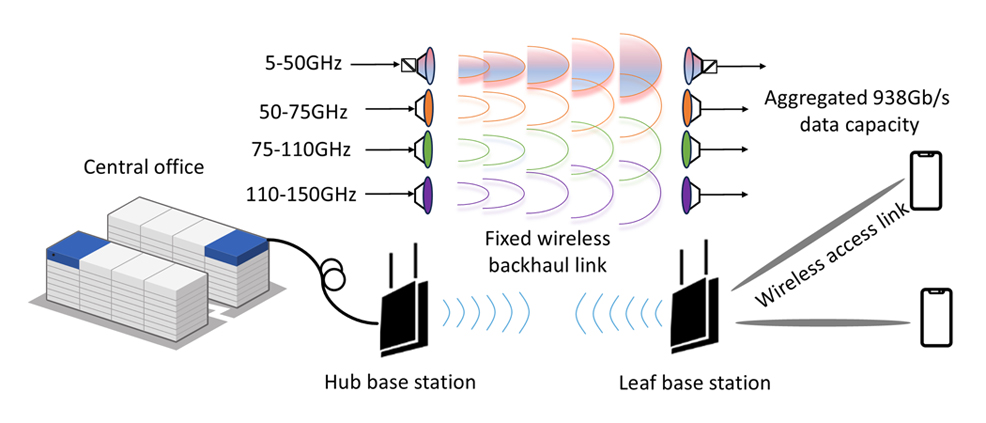
22nd October 2024 New speed record for wireless transmission A new world record for wireless transmission has been set by a team at University College London, who achieved 938 Gigabits per second (Gb/s) with ultra-wideband frequencies.
Since its global deployment began in 2019, the 5G standard has transformed wireless communications with up to a 100-fold increase in network speed, capacity, and efficiency compared to the earlier 4G standard. Average 5G download speeds are 186 Mbit/s in the U.S., while South Korea leads globally with 432 Mbit/s. While the theoretical maximum for 5G is 20 Gbit/s, researchers in the UAE set a record of 30.5 Gbps earlier this year during a controlled demonstration, showcasing the future potential of 5G-Advanced and its enhanced network features. Now, the relentless pace of technology is taking us towards an even more revolutionary leap forward – 6G. Researchers at University College London (UCL) have just set another new record for wireless transmission, achieving a massive 938 Gbit/s. This breakthrough offers a glimpse of the next-generation speeds we can expect from commercial carriers in the 2030s. The UCL team conducted an experiment involving ultra-wideband frequencies (spanning 5 GHz to 150 GHz), combining both radio and optical technologies for the first time. This allowed them to send and receive data about five times faster than the previous wireless transmission world record and 9,380 times faster than the best average 5G download speed in the UK. The results of their study are described in The Journal of Lightwave Technology.
A two-hour, 4K Ultra HD film (around 14GB of data) would take 19 minutes to download over 5G at 100 Mbit/s. Using this new technology it could be downloaded in just 0.12 seconds. Bandwidth is often a problem in densely populated urban environments, or at concerts and other large events, but these slowdowns are likely to be eliminated with 6G speeds. Real-time gaming experiences in VR and AR will also be hugely improved. "Current wireless communication systems are struggling to keep up with the increasing demand for high-speed data access, with capacity in the last few metres between the user and the fibre optic network holding us back," explains Dr Zhixin Liu, senior author of the study. "Our solution is to use more of the available frequencies to increase bandwidth, while maintaining high signal quality and providing flexibility in accessing different frequency resources. This results in super-fast and reliable wireless networks, overcoming the speed bottleneck between user terminals and the Internet. "Our new approach combines two existing wireless technologies for the first time, high-speed electronics and millimetre wave photonics. This new system allows for the transmission of large amounts of data at unprecedented speeds, which will be crucial for the future of wireless communications." While the UCL system has only been demonstrated in the laboratory, work is underway on a prototype for commercial testing. If successful, this should be ready to incorporate into commercial equipment within three to five years.
Comments »
If you enjoyed this article, please consider sharing it:
|
||||||








